
Danilo Pérez: Panama in a jazz note
We interviewed him on the occasion of the 22nd Panama Jazz Festival, which will take place from the 13th to the 18th of January 2025, we interviewed the professor Danilo Pérez, founder of the festival, and distinguished Panamanian musician.
By Panorama of the Americas Editorial Board
Photos: Cortesías

Danilo Pérez is synonymous with music, folklore, solidarity, and commitment. This Panamanian, who chose jazz as a way of life, has not only made significant contributions to the world’s musical heritage but has also rescued from the shelves of history the contributions of great Panamanian musicians. He continues to discover potential talents in the neighborhoods, talents that, without support, would not be able to develop.
Q Danilo, when exactly did you feel the call to music?
 I felt it twice. The first time was when a repairman came to fix our washing machine while my father and I were improvising music. We ended up inviting him to play a grater as if it were a güiro (gourd-shaped, ridged musical instrument), and he enjoyed it so much that he was reluctant to charge us. That was the first time I felt the call.
I felt it twice. The first time was when a repairman came to fix our washing machine while my father and I were improvising music. We ended up inviting him to play a grater as if it were a güiro (gourd-shaped, ridged musical instrument), and he enjoyed it so much that he was reluctant to charge us. That was the first time I felt the call.
The second was during an electronics exam at the university. The song “A Remark You Made” started to play in my mind and I had an epiphany. I imagined the applause and I didn’t finish the exam; I just turned it in and left, never to return.
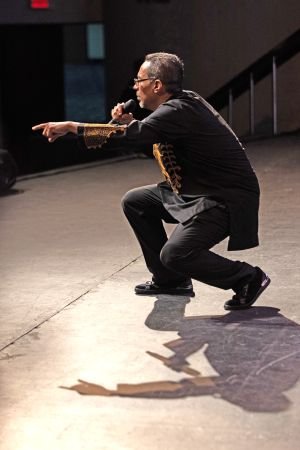
Q What was your first instrument and how old were you?
 My first instrument was a pair of bongos at the age of two.
My first instrument was a pair of bongos at the age of two.
Q Why jazz?
 A I chose jazz for its deep-rooted cultural heritage, its improvisational nature, and its unique ability to express our identity and convey emotions. Growing up in Panama, I was surrounded by local folklore, Latin music, world rhythms, and tambo jazz (Panamanian variant of jazz), which sparked my desire to meld these traditions with jazz and blues. Nowadays, I call my music “Global Jazz,” an inclusive space that brings together different cultures, genres, and instruments. My dream is to create a musical language that serves as a cultural bridge, similar to the iconic Bridge of the Americas. From early childhood, I dreamed of a music able to connect people from around the world.
A I chose jazz for its deep-rooted cultural heritage, its improvisational nature, and its unique ability to express our identity and convey emotions. Growing up in Panama, I was surrounded by local folklore, Latin music, world rhythms, and tambo jazz (Panamanian variant of jazz), which sparked my desire to meld these traditions with jazz and blues. Nowadays, I call my music “Global Jazz,” an inclusive space that brings together different cultures, genres, and instruments. My dream is to create a musical language that serves as a cultural bridge, similar to the iconic Bridge of the Americas. From early childhood, I dreamed of a music able to connect people from around the world.
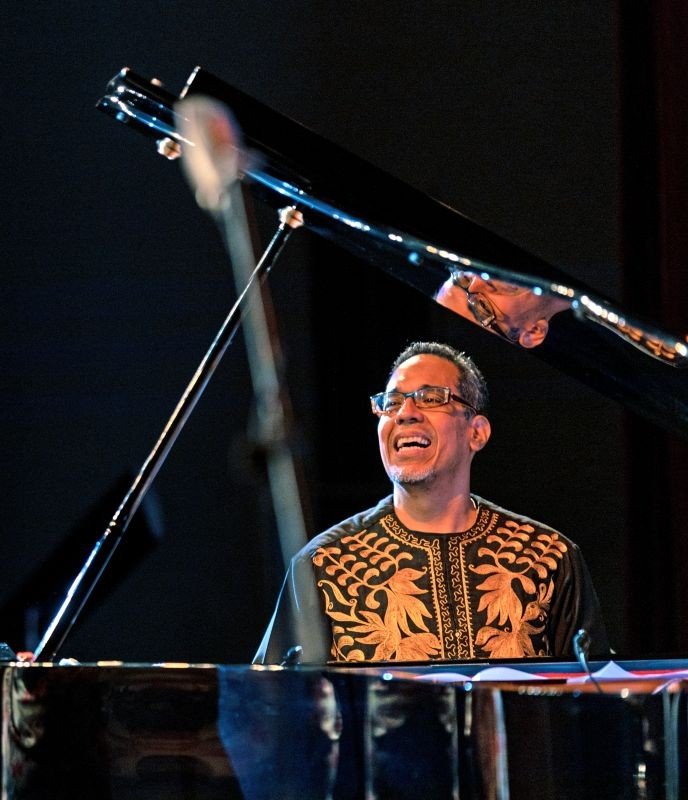
Q How did you become a maestro of this type of music?
My journey to making this type of music began in Panama, surrounded by records, tambo jazz influences, great mentors, and the rich musical traditions of my country and other parts of the world, all thanks to my father, who was a singer and an educator. This early connection awakened my desire to explore our cultural roots and the wider musical universe around us.
Thanks to the Quincy Jones scholarship, I was able to spend a year studying at the prestigious Berklee College of Music, where I immersed myself in jazz and world music. That experience, under the guidance of teachers like Donald Brown, who suggested that I audition for Jon Hendricks, propelled me to New York with a job where I began to forge my musical vision. This stage in New York broadened my horizons immeasurably, opening doors to collaborations with legends like Dizzy Gillespie, Roy Haynes, Jack DeJohnette, and Wayne Shorter. These encounters profoundly changed my artistic focus.
Now, as the founder of the Berklee Global Jazz Institute, my mission is to inspire students to discover their own voices, to connect with their cultural roots, and to use art as a tool of social transformation. This learning process continues to evolve, and I devote my days to sharing it.
Q: How would you define Panama’s relationship with jazz?
 Panama has enjoyed a close relationship with jazz since its creation. Since the 1850s, economic and cultural currents travelled by ship between New York, New Orleans, and Panama, making jazz a common language for many Panamanians. One notable example is Luis Russell, born in Bocas del Toro, who was the pianist and director of the Louis Armstrong Orchestra. Likewise, there is Panamanian Sonny White, the pianist who accompanied Billie Holiday on her iconic song “Strange Fruit.” These Panamanian musicians, like many others, have played a key role in the evolution of jazz, underscoring the importance of Panama in the development of this genre.
Panama has enjoyed a close relationship with jazz since its creation. Since the 1850s, economic and cultural currents travelled by ship between New York, New Orleans, and Panama, making jazz a common language for many Panamanians. One notable example is Luis Russell, born in Bocas del Toro, who was the pianist and director of the Louis Armstrong Orchestra. Likewise, there is Panamanian Sonny White, the pianist who accompanied Billie Holiday on her iconic song “Strange Fruit.” These Panamanian musicians, like many others, have played a key role in the evolution of jazz, underscoring the importance of Panama in the development of this genre.
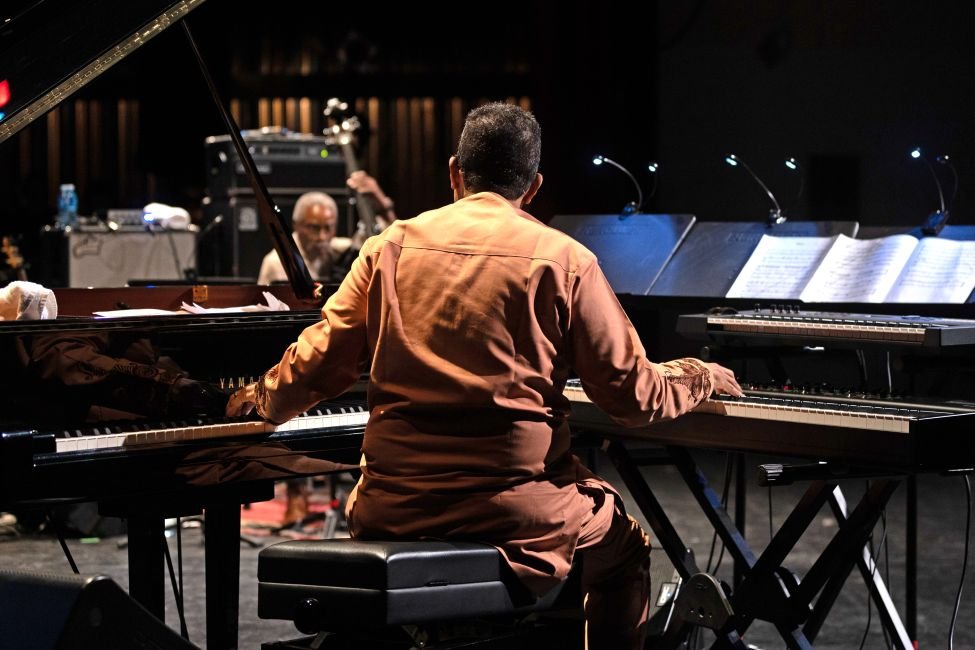
Q: What has Panama meant to jazz?
 Panama has played a vital role in the development of jazz, fusing autochthonous rhythms like calypso, son, and jazz, creating a unique and distinctive sound. Noted musicians like Victor Boa, Billy Cobham, Carlos Garnett, Eric Dolphy, and Princess Orelia Benskina, among others, have left a deep imprint on this genre. Jazz was not limited to those with professional experience, but was part and parcel of daily life, particularly in the city’s clubs and venues.”
Panama has played a vital role in the development of jazz, fusing autochthonous rhythms like calypso, son, and jazz, creating a unique and distinctive sound. Noted musicians like Victor Boa, Billy Cobham, Carlos Garnett, Eric Dolphy, and Princess Orelia Benskina, among others, have left a deep imprint on this genre. Jazz was not limited to those with professional experience, but was part and parcel of daily life, particularly in the city’s clubs and venues.”
Thanks to its strategic location and its rich history of cultural exchanges, Panama has become a musical melting pot, with the Panama Jazz Festival emerging as one of the most significant events of Latin American jazz. The fusion of indigenous genres like tamborito and cumbia with other Caribbean rhythms such as salsa and son has enriched Latin jazz, positioning Panama as a true hub of musical innovation and creativity.
Q: At what point in your music career did you decide to become an activist, essentially sponsoring thousands of young people with much talent but few opportunities?
 My parents’ influence from childhood on was crucial. In 1968, my father, a singer and educator, wrote his thesis “The Influence of Music on Elementary Education,” teaching me to see music as a fundamental part of education. My mother, an active politician and educator, showed me how education can be a tool of activism. This combination motivated me to be an activist and to support young people with much talent but few opportunities.
My parents’ influence from childhood on was crucial. In 1968, my father, a singer and educator, wrote his thesis “The Influence of Music on Elementary Education,” teaching me to see music as a fundamental part of education. My mother, an active politician and educator, showed me how education can be a tool of activism. This combination motivated me to be an activist and to support young people with much talent but few opportunities.
Q. How many young Panamanians have benefited from the Danilo Pérez Foundation and in what way?
 The Foundation has educated more than 25,000 children and young people from 4 to 25 years of age, with most between the ages of 8 and 18. Aside from nurturing musical ability, it provides life tools, using music as a means of personal development and promoting values such as discipline, creativity, teamwork, gender equality, and cooperation.
The Foundation has educated more than 25,000 children and young people from 4 to 25 years of age, with most between the ages of 8 and 18. Aside from nurturing musical ability, it provides life tools, using music as a means of personal development and promoting values such as discipline, creativity, teamwork, gender equality, and cooperation.
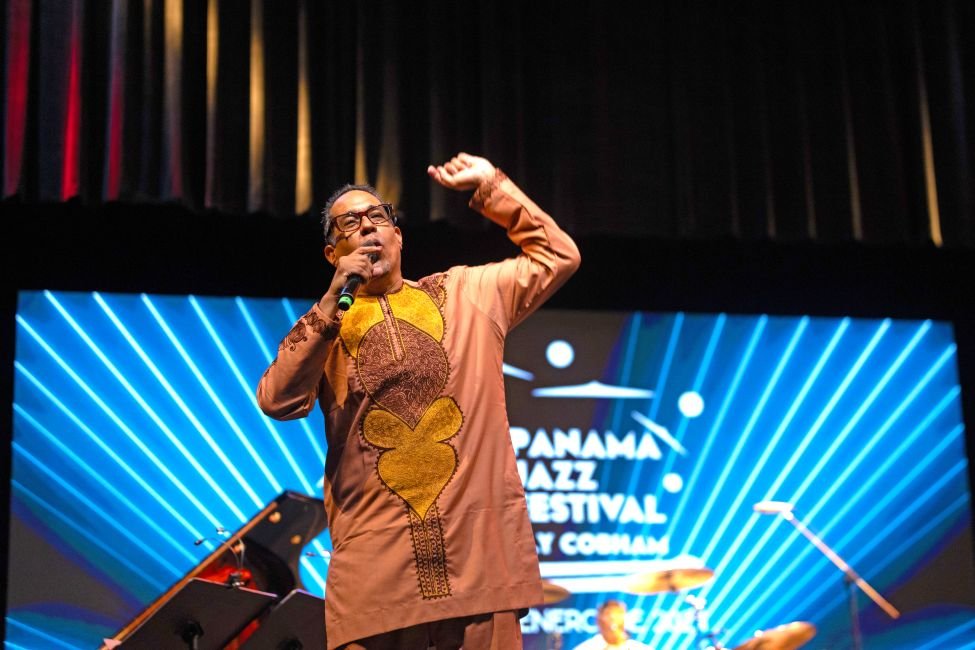
 Q. What do you think the Panama Jazz Festival means to Panama?’
Q. What do you think the Panama Jazz Festival means to Panama?’
 Since it began in 2003, the Panama Jazz Festival has become a national project and one of the most influential cultural and educational platforms in the region. Through music, the festival encourages human development and social, cultural, and educational transformation, while being a constant source of inspiration and education for new generations. It highlights the relevance of Panama in the history of jazz, projecting our culture to the world and leaving a lasting legacy. Recognized by law, the festival has established itself as an incubator for cultural and academic exchanges, bringing together people from around the world to learn, share ideas, and collaborate on high-quality projects.
Since it began in 2003, the Panama Jazz Festival has become a national project and one of the most influential cultural and educational platforms in the region. Through music, the festival encourages human development and social, cultural, and educational transformation, while being a constant source of inspiration and education for new generations. It highlights the relevance of Panama in the history of jazz, projecting our culture to the world and leaving a lasting legacy. Recognized by law, the festival has established itself as an incubator for cultural and academic exchanges, bringing together people from around the world to learn, share ideas, and collaborate on high-quality projects.
 Q. What is the festival’s focus this year? Who was Princess Orelia Benskina and what did she represent for Panama? Where or how can we listen to her music?
Q. What is the festival’s focus this year? Who was Princess Orelia Benskina and what did she represent for Panama? Where or how can we listen to her music?
 This edition of the festival will focus on the story of Princess Orelia Benskina, who was born in Colón in 1911 and moved to Harlem (New York) in 1922, where she became a prominent dancer, co-composer, and writer. Benskina was a multi-faceted artist who started out as a dancer on major stages like the Cotton Club and the Apollo Theater. She evolved into a jazz manager, producer, and composer. Benskina later wrote collections of poetry and turned to academic life, earning the American Heritage Award.
This edition of the festival will focus on the story of Princess Orelia Benskina, who was born in Colón in 1911 and moved to Harlem (New York) in 1922, where she became a prominent dancer, co-composer, and writer. Benskina was a multi-faceted artist who started out as a dancer on major stages like the Cotton Club and the Apollo Theater. She evolved into a jazz manager, producer, and composer. Benskina later wrote collections of poetry and turned to academic life, earning the American Heritage Award.
Her music was not formally documented, but the Princess Orelia Collective is now reimagining her life and work during the Panama Jazz Festival gala at Atlapa’s Anayansi Theater on Wednesday, January 15, 2025.”
Q: What about notable guest artists?
 We have the great singer Ledisi, saxophonist Everette Harp, Terri Lynn Carrington, John Patitucci, Princess Orelia Collective (with Panamanian artists Milagros Blades, Yvette Modestin, Patricia Zárate, and many more), Luca Ciarla solOrkestra (Italy) Nicole Mitchell’s Black Earth Vocorp, Panamanian singer Mayra Hurley, the renowned Swedish group The Bohuslän Band with soloist Danilo Pérez, and many other local and international performers.
We have the great singer Ledisi, saxophonist Everette Harp, Terri Lynn Carrington, John Patitucci, Princess Orelia Collective (with Panamanian artists Milagros Blades, Yvette Modestin, Patricia Zárate, and many more), Luca Ciarla solOrkestra (Italy) Nicole Mitchell’s Black Earth Vocorp, Panamanian singer Mayra Hurley, the renowned Swedish group The Bohuslän Band with soloist Danilo Pérez, and many other local and international performers.
 Q. Are there activities other than concerts?
Q. Are there activities other than concerts?
 In addition to concerts, the Festival offers music clinics, which are master classes taught by famous Panamanian and international artists, as well as noted professors from distinguished institutions like the Berklee College of Music, the New England Conservatory, New York University, and the New York Jazz Academy, along with other guest experts from around the world.
In addition to concerts, the Festival offers music clinics, which are master classes taught by famous Panamanian and international artists, as well as noted professors from distinguished institutions like the Berklee College of Music, the New England Conservatory, New York University, and the New York Jazz Academy, along with other guest experts from around the world.
In honor of the Festival’s 22nd anniversary, Full Pass scholarships will be awarded to students and musicians interested in participating in the educational events, which will take place January 13-17, 2025, from 9:00 a.m. to 3:00 p.m. at the City of Knowledge and the City of the Arts.
The only requirements are to register and comply with the standards of behavior expected at Panama Jazz Festival educational events. Young people under the age of 14 must be accompanied by a responsible adult.
The Full Pass scholarships will be otorged while supplies last : https://form.jotform.com/241655865491972


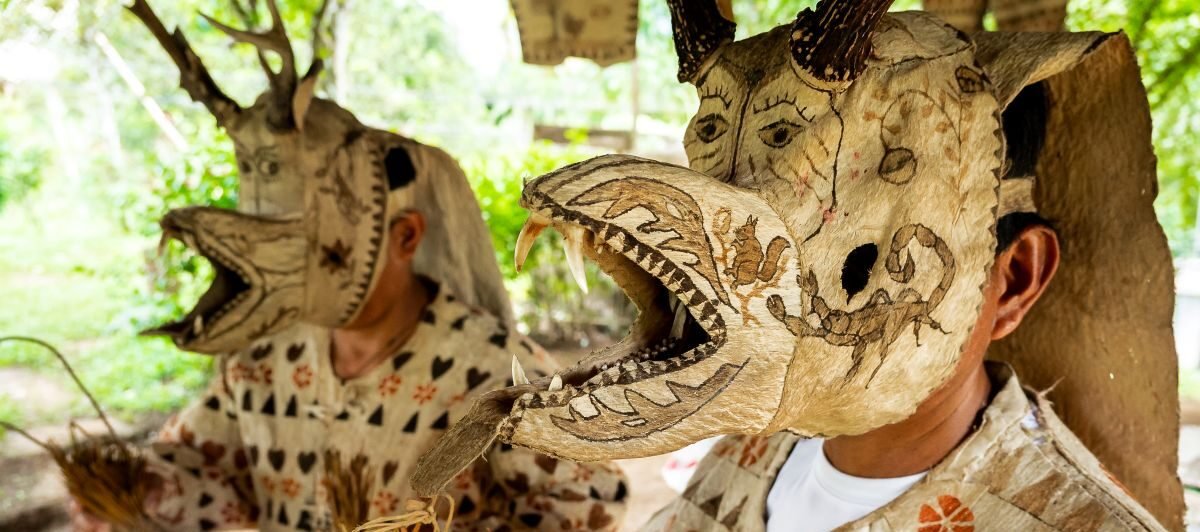

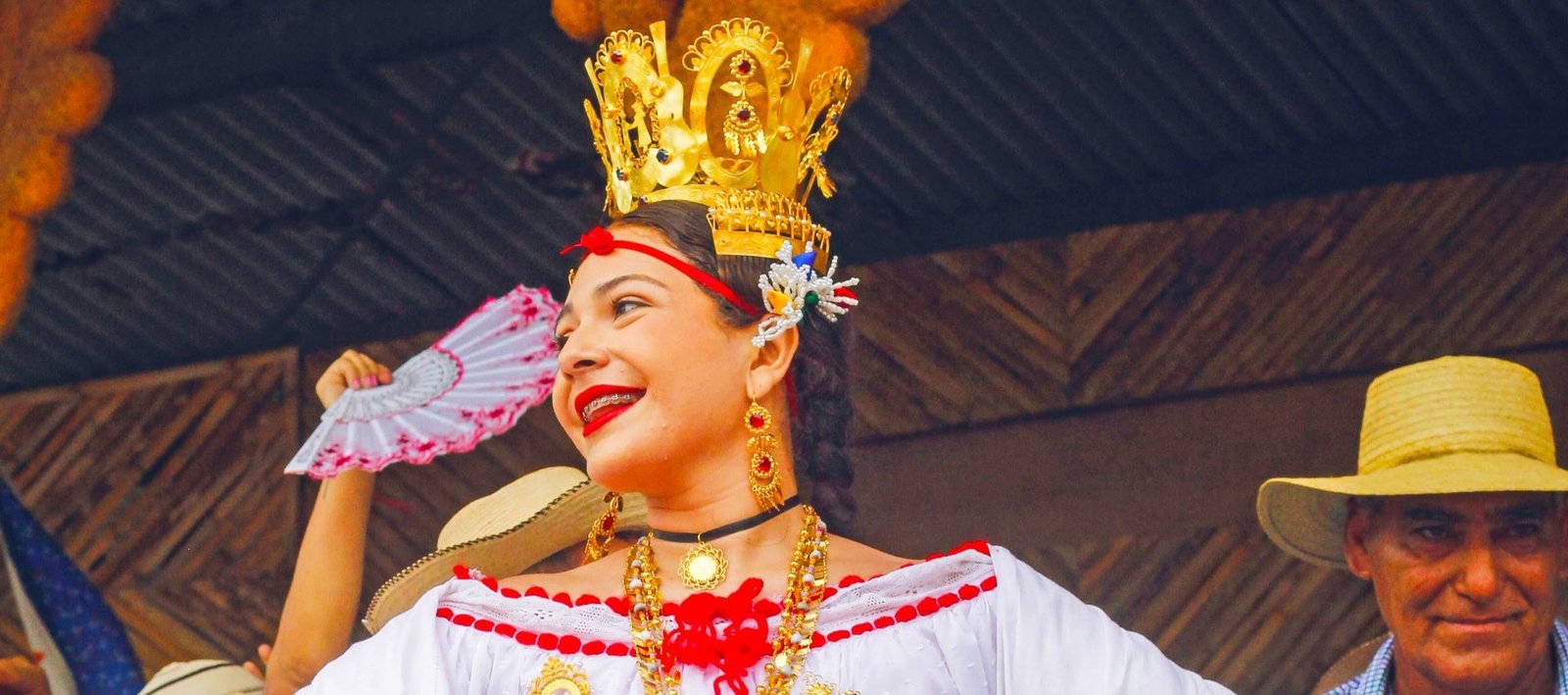
Leave a Reply